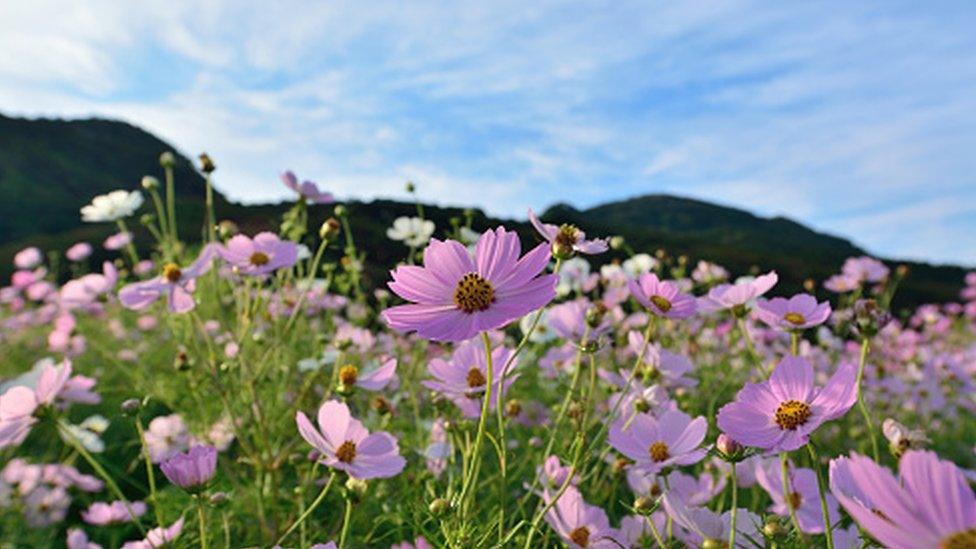Hay fever: Where can you go to avoid a runny nose and itchy eyes?
- Published

Do you spend your summer fighting a runny nose, itchy eyes and sneezing?
Around one in five people in the UK is affected by hay fever at some point in their life.
Hay fever is an allergic reaction to pollen - the fine powder that's released by plants.
Now scientists have come up with new maps showing where in Britain plants and trees known to produce pollen are. They hope it can help people with hay fever avoid these areas.
What is hay fever?
Hay fever is an allergic reaction to pollen, typically when it comes into contact with your mouth, nose, eyes and throat.
Pollen is a fine powder from plants that comes from the male parts of plants.
When pollen comes into contact with the inside of the nose, it can start a reaction that can cause sneezing, itching and a runny or blocked nose.
It's more common during the summer when the levels of pollen are highest.
There are three types of treatment for hay fever: anti-histamine tablets, steroid sprays to be used in the nose, and anti-allergy injections.
They stop your body's defence system from reacting badly to the pollen.
What do the new maps show?
The dark areas show where you're most likely to be find plants that can trigger hay fever
The 12 new maps show the plants that people with pollen allergies are most sensitive to, including grasses, trees (like willow, oak and ash), and plants (like nettles).
They have been made by the University of Exeter and the Met Office.
Scientists believe that if people use the maps, along with pollen forecasts and by looking at the time of year, they could reduce how much pollen they are exposed to.
Grass pollen, which is most common type of pollen, is around most in the late spring and early summer.
They could also help doctors narrow down which pollens are most likely to trigger asthma attacks.
Different plants are found in different areas
If grass pollen sets off your hay fever, the maps suggest you might want to avoid a holiday in Wales, or the Peak or Lake Districts.
Nettle plants seem to be mainly found in cities, with London, Birmingham, Liverpool, Manchester, Leeds and Glasgow, shown on the maps.
If you're most affected by pollen from hazel trees, Yorkshire is thought to be a good area to visit.
The south-east of England is the worst for hazel trees.
- Published20 May 2017
- Published12 June 2013
- Published12 June 2013
